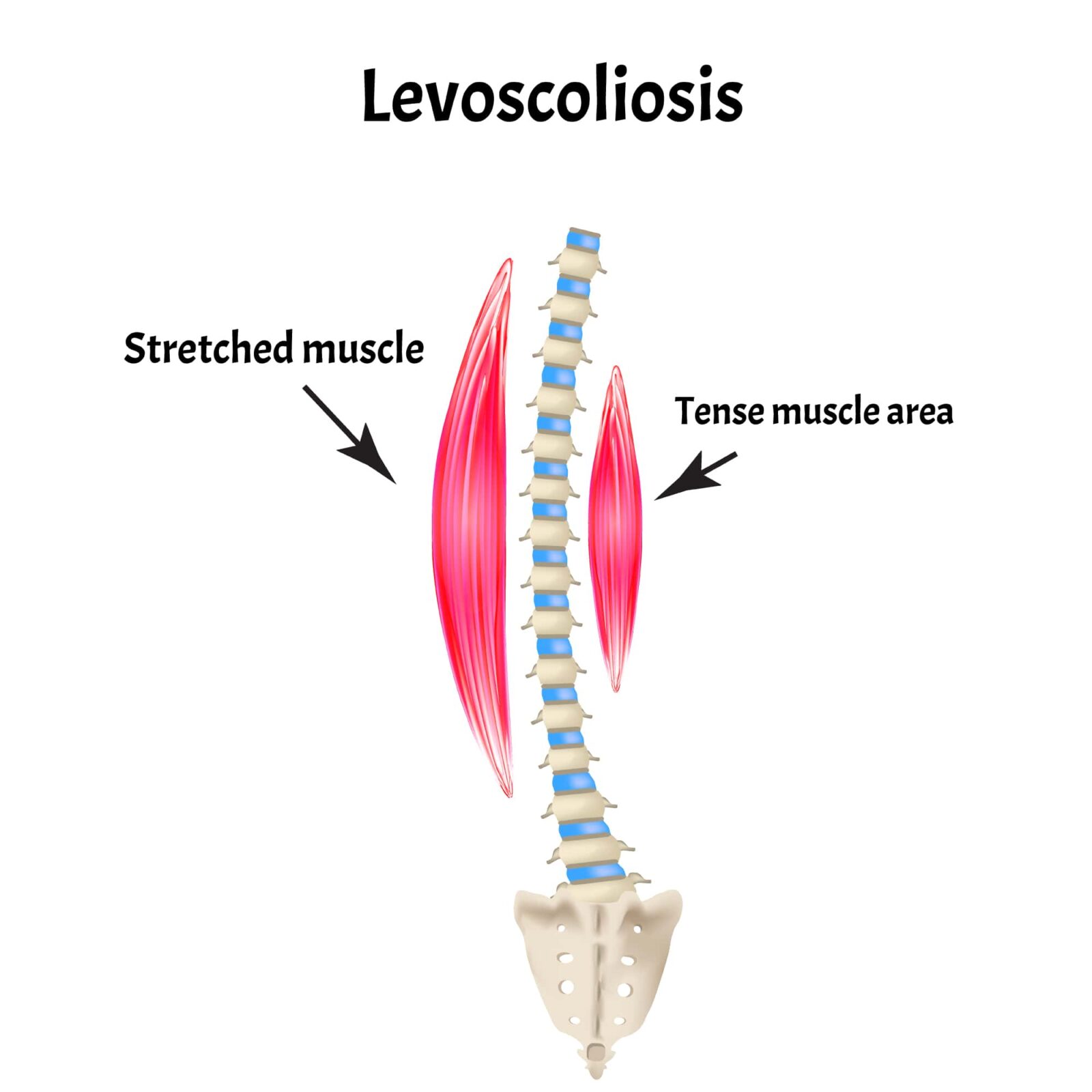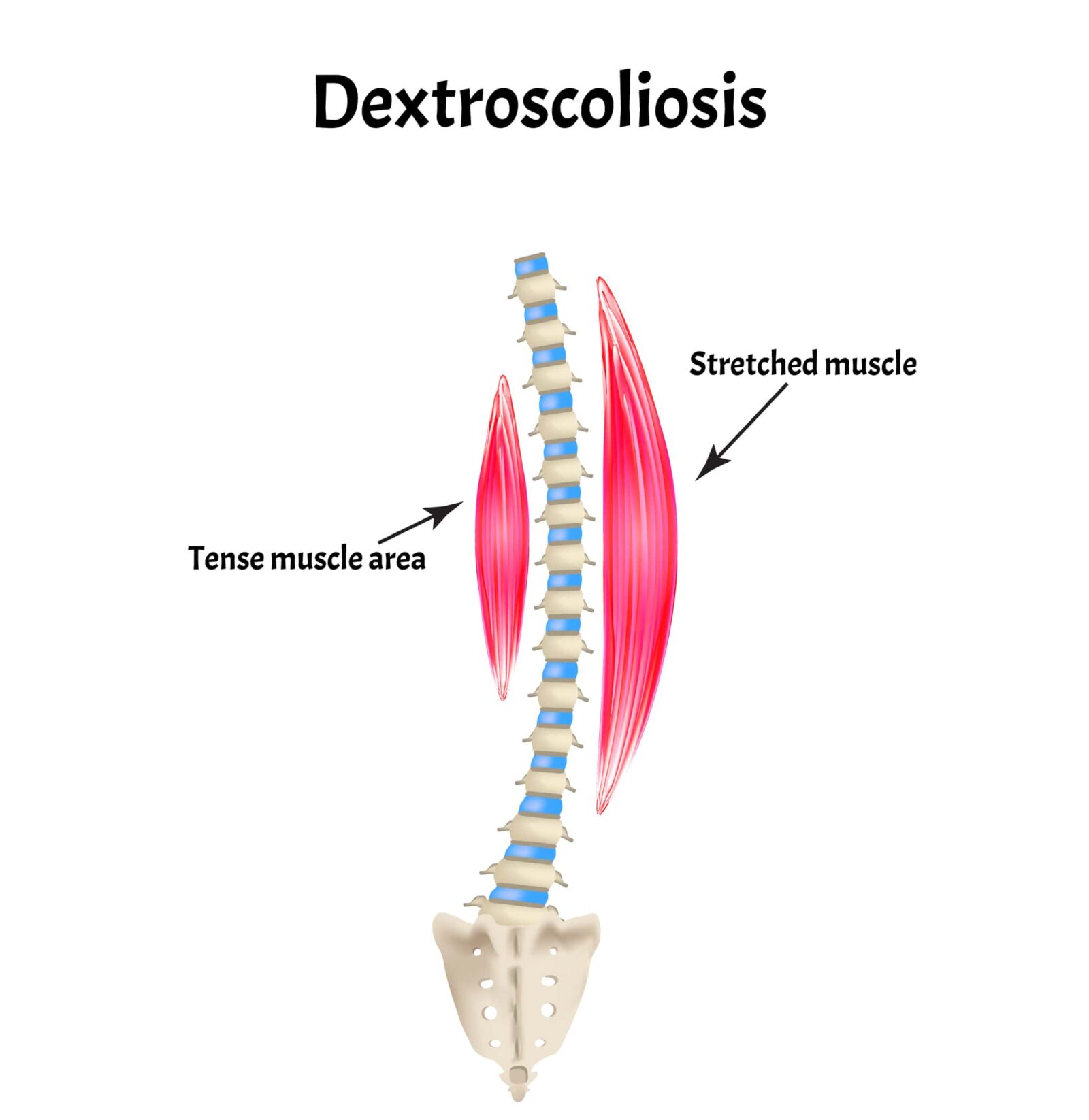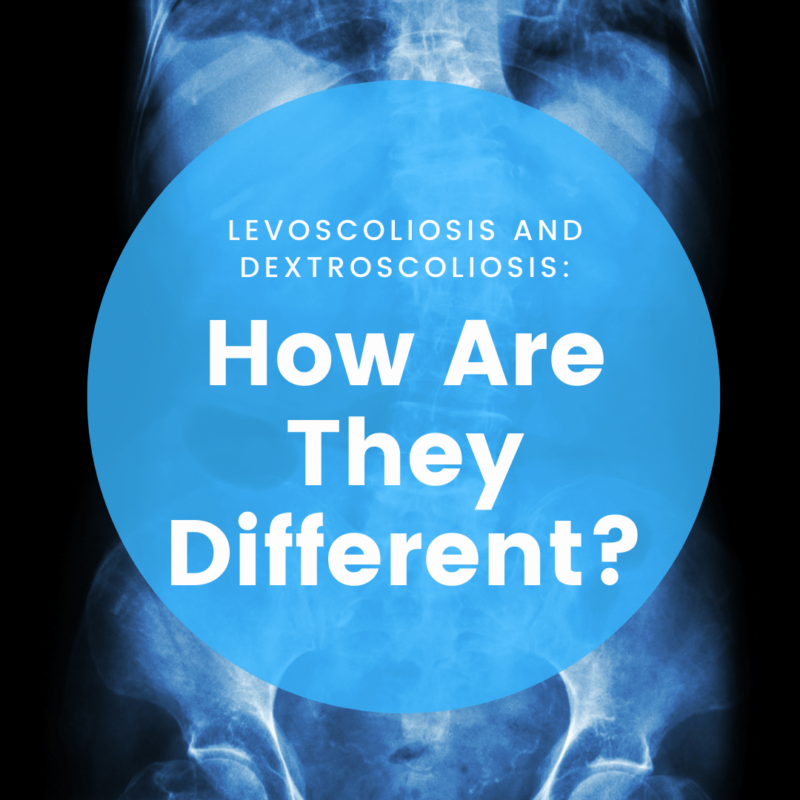Scoliosis is a condition that affects the spine, causing it to curve from side to side. There are two types of scoliosis: levoscoliosis and dextroscoliosis. In this blog post, we will discuss the differences between these two types of scoliosis. We will also talk about their symptoms, causes, and treatment options.
What is Scoliosis?
Scoliosis is a condition that causes the spine to curve from side to side. The spine is made up of a series of bones called vertebrae. In people with scoliosis, the vertebrae are not aligned properly, which causes the spine to curve.
There are two types of scoliosis: levoscoliosis and dextroscoliosis.

Levoscoliosis
Levoscoliosis is a type of scoliosis that affects the spine, causing it to curve to the left. This condition is less common than dextroscoliosis and is often seen in the lumbar region of the spine.
The most common symptoms of levoscoliosis are related to the appearance of the spine. With levoscoliosis, the spine is left to the center of the back. Oddly enough, this can make it appear as if the patient is bending to the right. Other symptoms of levoscoliosis include: uneven hips or shoulders, one arm that hangs lower than the other, ribs that stick out on one side, and a head that is not centered over the body.

Dextroscoliosis
Dextroscoliosis is a type of scoliosis that affects the spine, causing it to curve to the right. This condition is more common than levoscoliosis and accounts for 85-90% of adolescent scoliosis cases, according to a 2014 review published by the American Academy of Family Physicians. When this condition occurs, it is also more likely to affect the thoracic spine.
Like levoscoliosis, the most common symptoms of dextroscoliosis are related to the appearance of the spine and other anatomical structures. However, the spine curves to the right instead of the left. In addition to postural abnormalities, other symptoms may include fatigue, headaches, and difficulty breathing.
Causes of Levoscoliosis and Dextroscoliosis
Both levoscoliosis and dextroscoliosis are types of scoliosis that can cause the spine to curve from side to side. In many cases, scoliosis is idiopathic. This means that there is no known cause. However, there are some people that have a case of scoliosis that can be traced back to:
- Injury or trauma to the spine
- Congenital abnormalities (present at birth)
- Neuromuscular disorders (conditions that affect the muscles and nerves)
- Scoliosis caused by another medical condition (arthritis, osteoporosis, disk degeneration, ankylosing spondylosis, and vertebral compression fractures)
Treatment for Levoscoliosis and Dextroscoliosis
Both levoscoliosis and dextroscoliosis are diagnosed with a physical examination and X-rays of the spine. During a physical exam, a scoliometer is used to measure the amount of rotation in the spine. This is a device used to measure the curvature of the spine. Spinal x-rays can also confirm spinal curvature and its effect on other structures. The severity and direction of the curve will determine what kind of treatment is necessary.
Mild (<25 degrees)
Mild scoliosis (curves that are less than 25 degrees) usually does not require treatment. The doctor will likely just monitor the patient to make sure that the curve does not progress.
Moderate to Severe (>25 degrees)
Moderate to severe scoliosis (curves that are greater than 25 degrees) may require treatment. The goal of treatment is to stop the progression of the curve and relieve pain. Treatment options for moderate to severe scoliosis include:
- Bracing: Wearing a brace can help prevent the curve from getting worse. The brace is usually worn for 12 to 23 hours a day.
- Surgery: In some cases, surgery may be necessary to correct the curve. There are two types of scoliosis surgery: spinal fusion and vertebral column resection. Spinal fusion is the most common type of scoliosis surgery. It involves permanently connecting two or more bones in the spine using metal rods, hooks, screws, and/or wires. Vertebral column resection is a less common type of scoliosis surgery. It involves removing a section of the vertebral column in order to straighten the spine.
In Conclusion
In this blog, we discussed levoscoliosis and dextroscoliosis: two types of scoliosis that cause the spine to curve from side to side. We talked about their symptoms, causes, and treatment options. If you think you or your child may have scoliosis, be sure to see your local spinal specialist for an evaluation.










